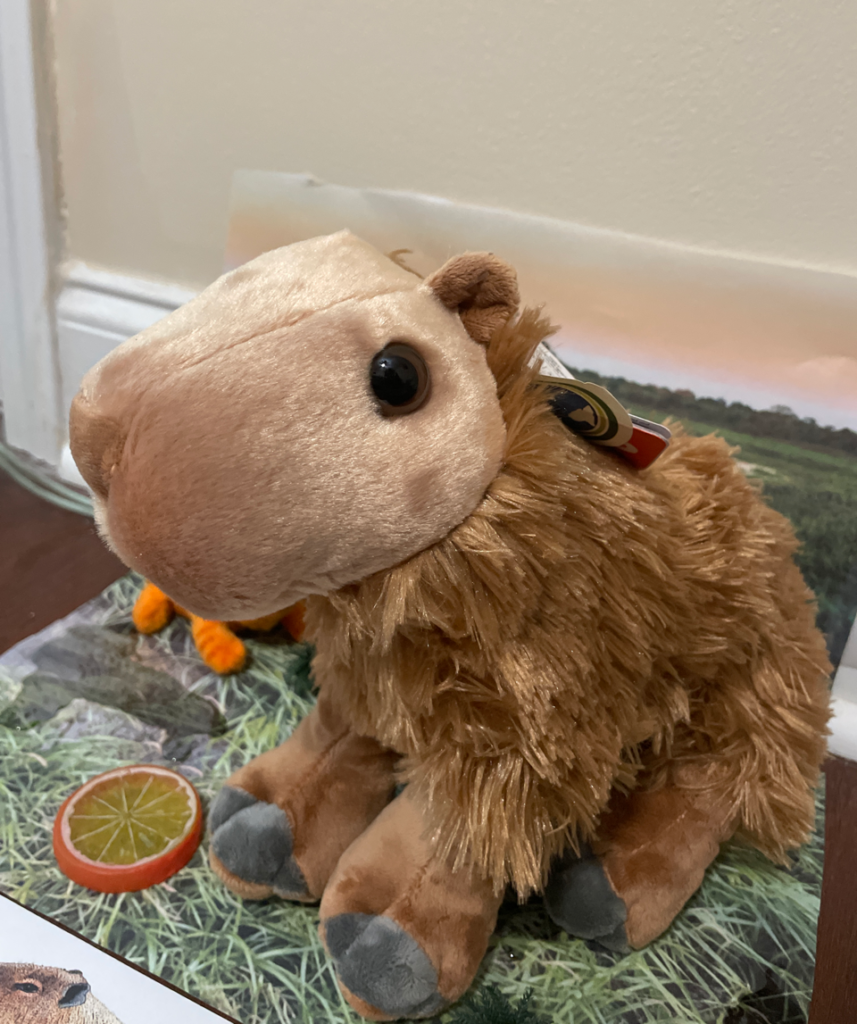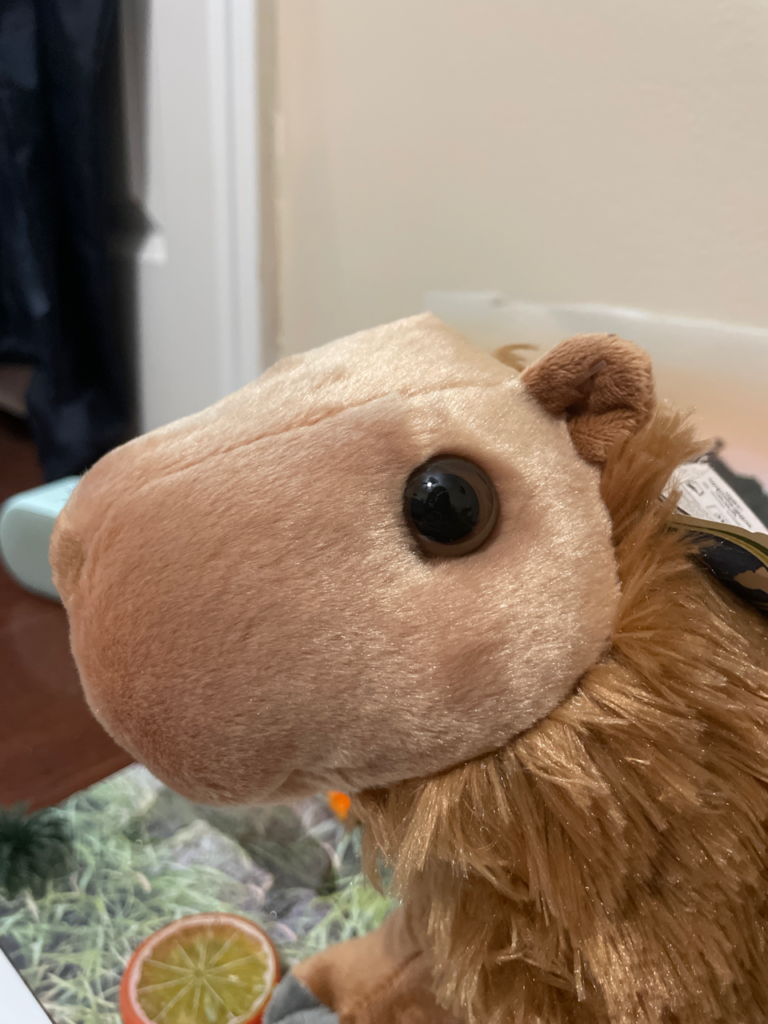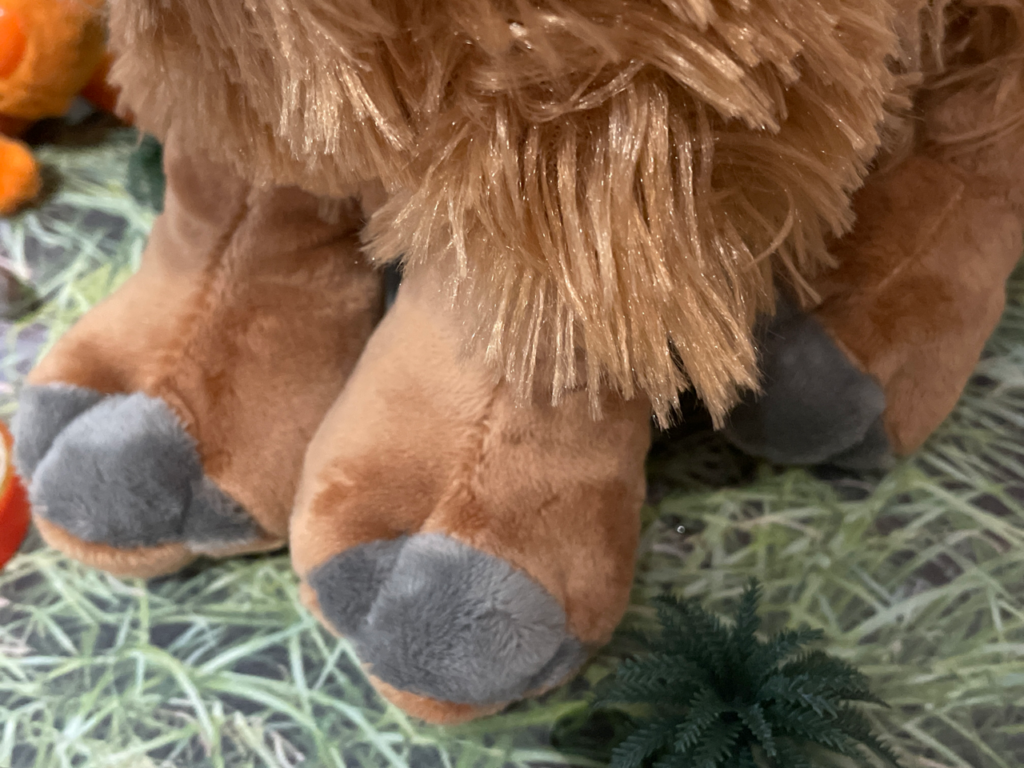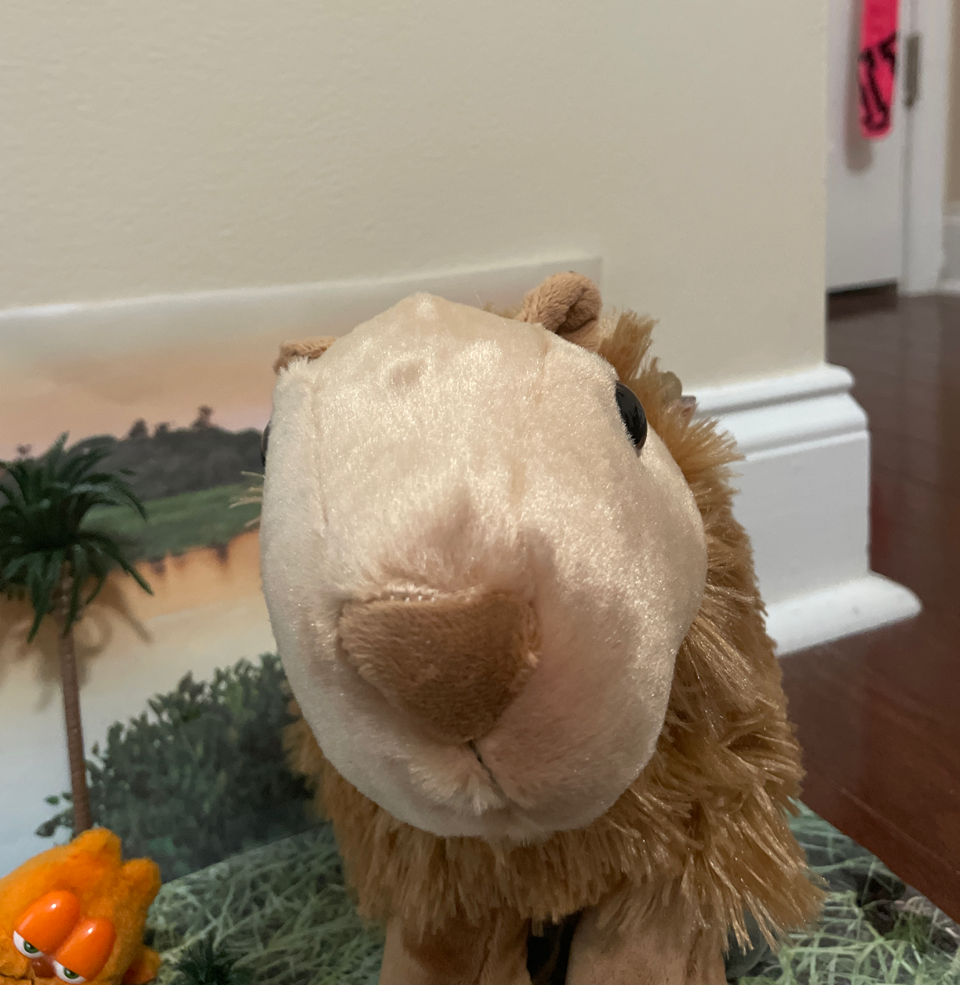Review and images by Sam; edited by bmathison1972
Just recently, I went on a vacation to New York City, where I was born and raised, and during this vacation, I visited the Staten Island Zoo, one of my favorite zoos of all time. To commemorate this trip, I knew I had to stop in the gift shop. Like the rest of the zoo, the gift shop was very small, with only a few shelves of plush toys of sloths, monkeys, and even tropical fish behind the counter. As small as the gift shop was, I did like the collection of plush toys they offered as someone who prefers unusual stuffed animals over the typical teddy bears and dogs. I ended up adopting a plush of my other favorite animal, the capybara.
The capybara (Hydrochoerus hydrochaeris) is the world’s largest rodent. Native to South America, it can be found in tropical wetlands and rainforests in the countries countries of Brazil, Venezuela, Argentina, Ecuador, Paraguay, Uruguay, and Guyana. In the countries it is native to, it goes by several local names, including capivara (Brazil), chigüire (Colombia), chigüiro (Venezuela), carpincho (Paraguay), and watrush (Guyana). Its ecological niche includes creating now ecosystems for other species by eating grass. It also enjoys fresh fruit—especially oranges since they cannot produce their own Vitamin C naturally; in Japan, they enjoy taking “yuzu baths,” where they are submerged in bath tubs filled with a species of citrus fruit from East Asia called yuzu. The capybara is currently listed as “Least Concern” on the IUCN Red list, but habitat destruction for agriculture, poaching, and the pet trade pose a threat to the species.

Due to the popularity of the capybara, especially through Internet memes, many plush toys of this animal exist, but most of them are more stylized for the purpose of meme merchandise, and not many realistic capybara plush toys exist due to this. The capybara plush I adopted from the zoo’s gift shop is made by Wild Republic, a brand renowned for their realistic plush reproductions of animals, as well as producing animal plush toys you would not find from other brands, so at least some decent realistic capybara plush toys exist. I named my capybara “Luís,” a name fitting for his species’ South American origins, and will be referred to as such throughout the review.

Luís is covered in shaggy, golden-brown fur, with longer fur covering most of his body to mimic the shaggy fur of real capybaras, and shorter fur on his face and legs. He has a square-shaped head and a stocky, barrel-shaped body, which is anatomically accurate. He has a pale brown nose that is shaped like an upside triangle, with the bottom corners folded inward to give the illusion of nostrils. Older productions of this plush actually have nostrils stitched into the nose, but according to his “tush tag,” Luís was produced in 2023, making him the newer version. To be honest, I find the method of replicating nostrils on my individual more realistic than how Wild Republic used to do it. His mouth is the typical, Y-shaped stitched lined of most stuffed animals, but is still somewhat faithful to the mouth shape of real capybaras.
Luís’ eyes are not the almond shaped black eyes of real capybaras; rather, they are the hard plastic “safety eyes” most plush toys by Wild Republic have, and they are colored a dark brown. I do not mind this inaccuracy at all, since the shape and color of his eyes actually make him look more expressive and alive. In fact, I always preferred the “safety eyes” on plush toys in general for this exact reason. Another minor inaccuracy on this specimen is the amount of toes on his feet. While real capybaras have four toes on their front feet and three on the back, Luís has three on both his front and back feet. However, they still designed his feet to look as if they are webbed—especially his back feet—since he is a semi-aquatic mammal, which overshadows this inaccuracy.

Luís is 12 inches in size, making him the perfect size to display or to travel with. He looks very good in the Pantanal-inspired habitat I built for him to be proudly displayed in. He is designed to be a children’s cuddly toy or a display piece in one’s stuffed animal collection.

Luís is important to me because he is a souvenir from a childhood zoo that I absolutely adore, as well as a reminder of the awesome time I had on that vacation. Most collectors of plush toys have that one stuffed animal in their collection that means so much to them for a specific reason, and Luís is that plush to me. Overall, Luís is a nicely realistic and absolutely adorable capybara plush, as well as highly educational. I highly recommend this plush to anybody who loves capybaras or animals in general, to those who like to collect unusual and exotic stuffed animals, and of course to younger children who love to cuddle with stuffed animals or are learning about animals. It is still in production to this day, so you can find this plush at your local zoo or aquarium’s gift shop, as well as at online retailers such as Amazon, eBay, or Stuffed Safari.
Disclaimer: links to Ebay and Amazon on the AnimalToyBlog are affiliate links, so we make a small commission if you use them. Thanks for supporting us!



